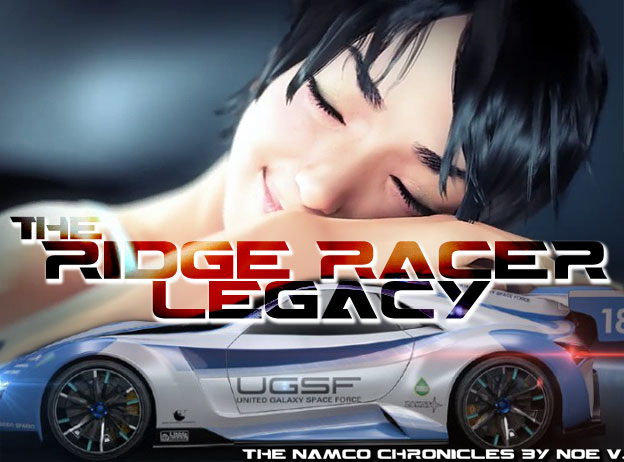
When the original Ridge Racer Team left Namco in 1993 to join the rivals at Sega many thought it would be the end of a racing legacy. Many of the minds that had a hand in Pole Position and Final Lap had left the company for various reasons. Namco would have to start all over from scratch and have a racing game ready for next season or risk falling further behind the competition. They assembled members from other divisions to fill in the gaps. These members were tasked to have an improved version of the original game, with additional tracks and better graphics out in less than a year.
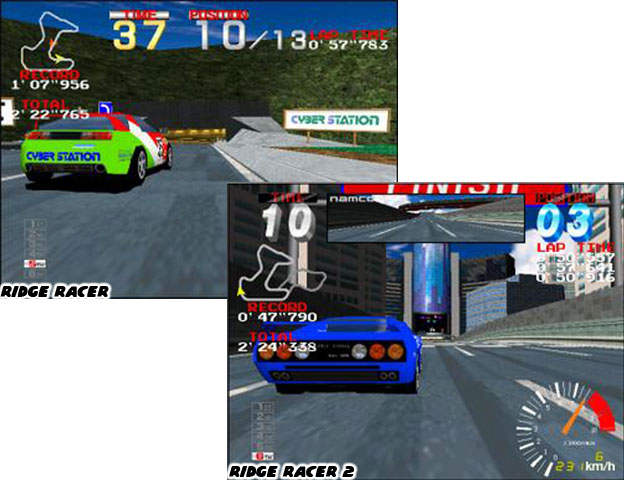
In 1994 the most die-hard arcade racing fans could tell there was something slightly different about Ridge Racer 2 over its predecessor but it was tough to pin down. The graphics and level details had improved and the cars seemed modeled much better. There were even changes in the time, players raced in daylight, at dusk, night, and dawn during the course of four laps. This was something that very few games had even attempted during the era. There was something about the control that was not quite dialed in when compared to the original. The important elements however remained. The game was still focused on sports racers on closed off city streets. The street racing element was a refreshing change of pace over the simulation type professional circuits in most titles.
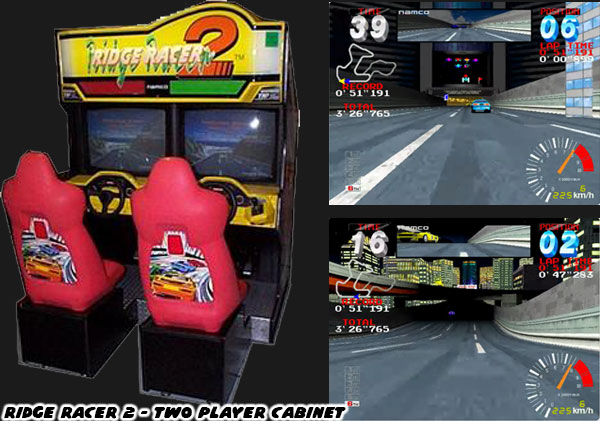
Although audiences didn't realize it there was an entirely new team developing the game. They were shifting the focus of Ridge Racer as well. The original title celebrated the small, inexpensive sports car and wrapped an experience around it. This meant that the game was somewhat grounded in reality. Cars could not accelerate impossibly fast, nor could they hit the absurd speeds as the cars in the Sega titles. The studio did take some liberties with the physics of the game and made it easier for arcade visitors to pitch their cars sideways and drift around some narrow roads. Pricier generic sports cars were in the game but were not necessarily the stars of it. The exotic or super car began to get more and more of a push in sequels. The decision to do so meant that the courses would have to evolve to take advantage of rides that could go much faster and slide much longer.
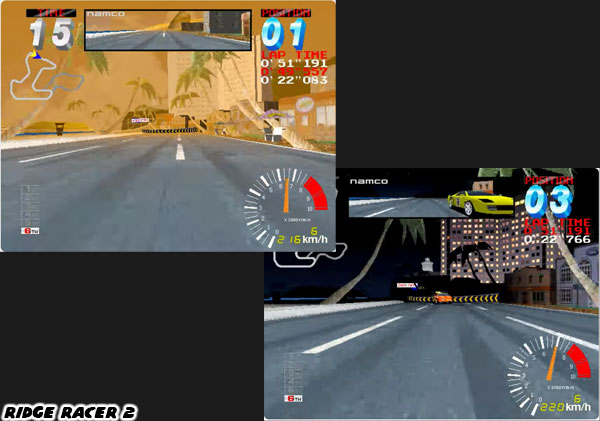
The new development team would spend the next few releases feeling out the franchise. The second game was an improvement but mirrored the original so closely that it left little room for innovation. They wanted to make the subsequent game truly one of their own. A minor bump in graphics was not the strongest selling point for 1995's
Rave Racer. The control was much more dialed in but it was how those controls were reflected on screen that had the biggest impact with players. The screen actually rotated from side to side depending on how hard a player had turned the steering wheel. The back and forth rocking of the road was enough to give players vertigo. I have no idea what could have possessed the people at Namco to program in a sea sickness inducing mechanism into the franchise.
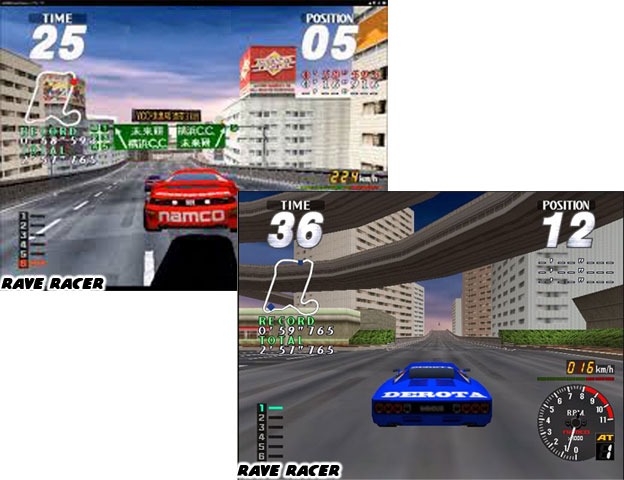
The third game in the series was very experimental, a sort of soft reboot of the franchise. Even the full name of the game reflected this call to action, Ridge Racer Project: Rave Racer. It would be the first of many new innovations the new team at Namco would be introducing. The music in Ridge Racer had always had an electronic tendency but by Rave Racer the studio was identifying a particular form of dance music as the culture behind the game. For obvious reasons the blazing fast beats heightened the sensation of racing mere inches from stone walls and skyscrapers. For example one of the standout music tracks written by longtime collaborator Sanodg was titled
Teknopera. The song reflected the modern and classic aesthetics that Namco was trying to merge. Rave Racer was anything but another typical arcade game. Unfortunately it was so extreme on the spectrum of ideas that racing fans either loved it or loathed it.
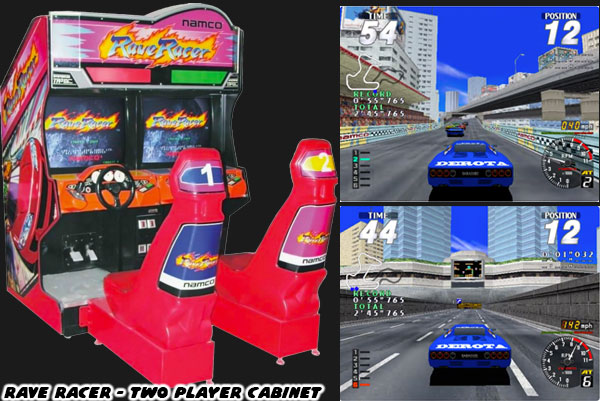
Namco had a hard time rebuilding their team after the Sega debacle. There was something else on the horizon that would take another chunk out of the studio. A new console generation was due and several companies were looking to sign up exclusive publishers. Namco would have to choose sides in the upcoming console war. There was no way that Namco would help Sega by developing content for the Saturn. Nintendo was not readily pushing 3D hardware or even storage devices that held more memory than a CD. By the mid '90s several arcade units ran on architecture that supported content written on optical drives. The cartridge as a storage device was quickly falling out of favor for arcade developers.
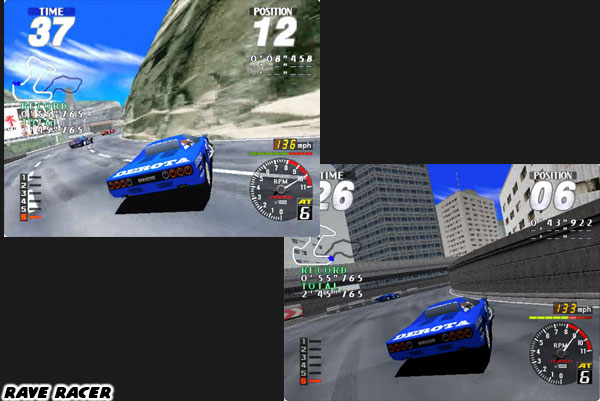
The studio that was raising the biggest stakes was Sony. They would be the alternate choice for developers. They had hardware that was focused on 3D and CD storage as well. The new system would be called the Playstation. The partnership between Sony and Namco was obviously written in the stars. This relationship also meant that the studio would have to get a version of Ridge Racer available to them for every console generation. No sooner did Rave Racer hit the arcades than the development team was busy cutting their teeth on the Playstation development kits. Namco used the development cycle to become familiar with the limitations and possibilities of the new hardware. The publisher would slowly cut back on arcade development and focus their energy on the consoles for the remainder of the '90s. The next blog will look at the arcade adaptation that completely reinvented the franchise.
As always if you would like to sponsor me
please visit my Patreon page and consider donating each month, even as little as $1 would help make better blogs and even podcasts!














No one way NAMCO would put there games on Saturn, heh.
ReplyDelete